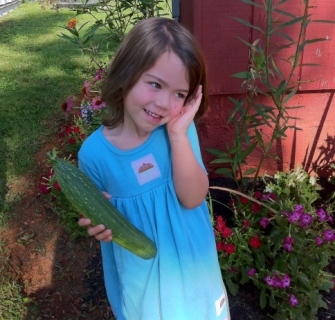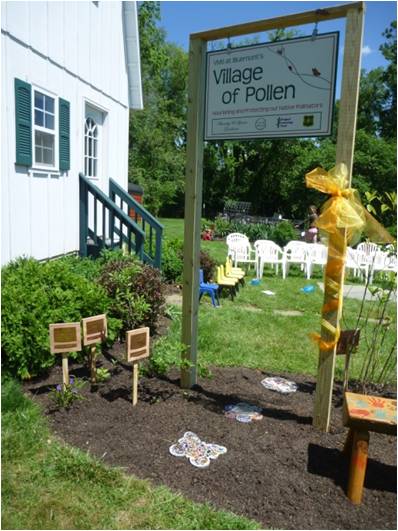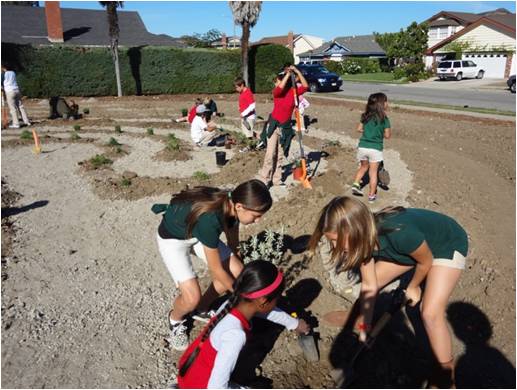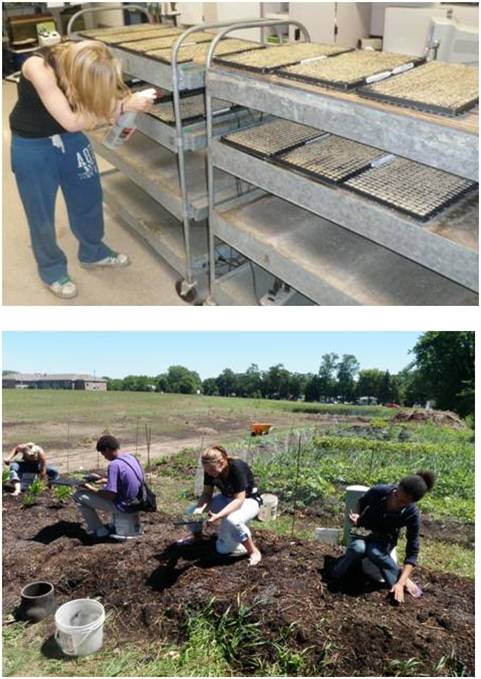 Pollinators play an important role in the production of the food we eat, the health of flowering plants we love to admire, and so much more!
Pollinators play an important role in the production of the food we eat, the health of flowering plants we love to admire, and so much more!
With reports of declining numbers and health of pollinators, it’s important to teach students the impact pollinators have on our lives. One way to do this is to support the creation and revitalization of habitat where pollinators of all sizes can thrive.
Every year, Project Learning Tree awards GreenWorks! grants for environmental service-learning projects, such as creating school gardens and natural habitat for pollinators.
In 2011, Project Learning Tree, with support from the U.S. Forest Service and the Prince William Network, awarded 28 PLT GreenWorks! grants to schools and community programs in 20 states. The grants enabled students to create gardens and new habitats for pollinators as part of the PollinatorLIVE: A Distance Learning Adventure program.
Here are three noteworthy projects from around the country:
Elementary Students in Virginia: A Village of Pollen
 Village Montessori School in Bluemont, VA, involved elementary students, teachers, and parent volunteers in creating a “Village of Pollen.”
Village Montessori School in Bluemont, VA, involved elementary students, teachers, and parent volunteers in creating a “Village of Pollen.”
Their garden is made of three sections: meadow, woodland, and pond-side. Students researched, planned, and created this breathtaking addition to their outdoor classroom and found native plants that were appropriate for each area of their garden.
“The rains came, the sun shone, and a new plant grew,” said one student during the school’s garden dedication. Students dressed up as the sun, flowers, butterflies, bumblebees, and gardeners to perform an interpretive skit that they wrote about their garden.
The project helped bring students, parents, teachers, and community partners together to enhance student learning, support the growth of the school’s outdoor classroom, and create new habitat for native pollinators.
Middle School Students in California: EARTHS Community Garden
 Along with their teachers and community members, students at EARTHS Magnet Middle School in Newbury Park, CA, designed, planted and now maintain a community garden with a native plant pollinator labyrinth.
Along with their teachers and community members, students at EARTHS Magnet Middle School in Newbury Park, CA, designed, planted and now maintain a community garden with a native plant pollinator labyrinth.
This project provided a great opportunity for inquiry-based and cross-curricular learning. Students first studied parts of a plant during their classroom units on plants and insects and incorporated activities from PLT’s PreK-8 Environmental Education Activity Guide (for example, Activity #24 Nature Recyclers, Activity #41 How Plants Grow, Activity #64 Looking at Leaves, and Activity #65 Bursting Buds.) They also learned about weather, soil composition, and Native Americans’ (Chumash Indian) use of native plants.
Having plants available for students to see, touch, and smell increased their understanding of how the Chumash people, as well as pollinators, rely on native plants. Planting and taking care of these plants increased their sense of environmental stewardship.
High School Students in Minnesota: Land Restoration Project
 Bees, butterflies, birds, and other pollinator species can also find new habitat around Wright Technical Center and Wright Learning Center (WTC/WLC) in Buffalo, MN.
Bees, butterflies, birds, and other pollinator species can also find new habitat around Wright Technical Center and Wright Learning Center (WTC/WLC) in Buffalo, MN.
Students in grades 6-12 helped restore biodiversity to 5.2 acres of old cropland on their school property by planting native vegetation. They set up an indoor nursery for native species and had 10,000 plants growing in there at one time! Students also created an outdoor classroom as part of the project that now serves eight cooperative school districts.
“They [students] love the concept that they’re doing something for the environment and they can come back in 10 or 20 years from now and say ‘I had a hand in making this facility’,” said Craig Hagberg, science teacher at WTC/WLC.
Before, this area received regular complaints and was an eyesore in the local community. Now, it’s on its way to becoming an incredible outdoor space and will provide many learning opportunities for students and community members for years to come.
Making Progress
Monarch Butterfly Biosphere Reserve and World Wildlife Fund Mexico reported that the number of monarch butterflies migrating from Canada and the U.S. to Mexico increased in 2011. This was good news for the many Project Learning Tree students and teachers who worked hard to create butterfly gardens in their schools and communities as part of MonarchLIVE in 2010.
However, the overwintering monarch population has since declined again, reinforcing the need to do more in the U.S. to conserve and restore milkweeds to assure a future for these beautiful butterflies.
We hope that through the efforts of PollinatorLIVE and the many students and community members who are working hard to maintain, improve and create pollinator habitat, we will see improved numbers in the future — not only for monarchs, but for all pollinators.
PollinatorLIVE is a partnership between Project Learning Tree, the U.S. Forest Service, and the Prince William Network. For more information, lesson plans, and resources please visit the PollinatorLIVE website.


